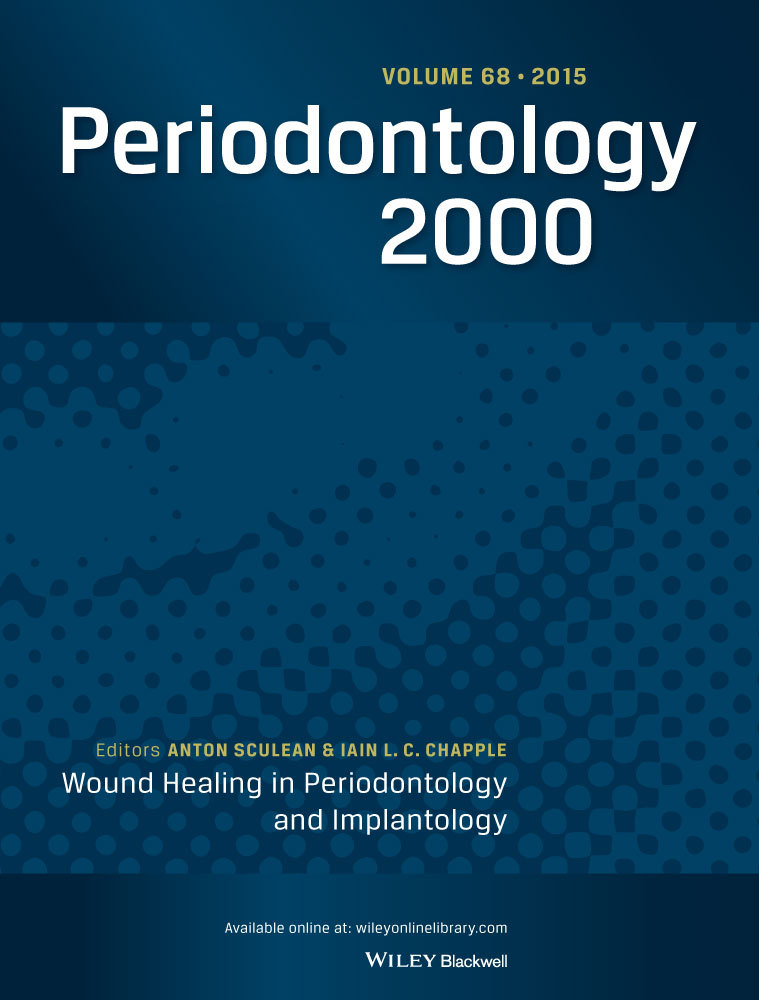公共卫生和以患者为中心的预防战略对高收入国家牙周炎和龋齿作为牙齿脱落原因的影响。
IF 15.7
1区 医学
Q1 DENTISTRY, ORAL SURGERY & MEDICINE
引用次数: 0
摘要
在高收入国家,人口的口腔健康受到公共卫生干预、口腔护理产品的广泛使用、牙科实践措施和牙科治疗费用的影响。我们汇编了过去三十年牙周炎、龋齿和牙齿脱落的近端和上游决定因素流行率变化的信息,以概述它们在此期间对口腔健康变化的潜在影响。我们从反复进行的横断面研究和已发表的文献中获取了相关信息。虽然缺牙症的发病率和缺失牙齿的数量(来自 DMF-T 指数)都有所下降,但健全牙齿的数量和牙齿总数却有所增加。重度牙周炎的患病率没有变化,而牙周健康和中度牙周炎的患病率可能略有增加。在口腔健康风险因素方面,受过高等教育的人的比例增加了,而吸烟率下降了。越来越多的人使用口腔护理产品。在保持牙齿方面,一种报销制度是否比另一种报销制度更有效,目前还无法阐明。在牙齿保留方面,全民使用含氟牙膏的影响最大。在某种程度上,牙齿数量增加可能与更频繁地使用牙间清洁辅助工具和电动牙刷有关。由于大多数队列中的严重牙周炎没有减少,因此牙周干预措施可能对提高牙齿保留率作用不大。本文章由计算机程序翻译,如有差异,请以英文原文为准。
Impact of public health and patient-centered prevention strategies on periodontitis and caries as causes of tooth loss in high-income countries.
In high-income countries, the oral health of the population is influenced by public health interventions, widespread use of oral care products, dental practice measures, and the cost of dental treatment. We compiled information on changes of the prevalence of proximal and upstream determinants of periodontitis, caries, and tooth loss over the last three decades to outline their potential effects on changes of oral health during this period. Information was retrieved from repeated cross-sectional studies and from published literature. While both the prevalence of edentulism and the number of missing teeth (from the DMF-T index) decreased, the number of sound teeth as well as the total number of teeth increased. The prevalence of severe periodontitis was unchanged, whereas the prevalence of periodontal health and moderate periodontitis may have increased to a minor extent. Concerning oral health risk factors, the proportion of individuals with tertiary education increased, while smoking prevalence declined. More and more people used oral care products. Whether one reimbursement system worked better than another one in terms of tooth retention could not be elucidated. In tooth retention, population-wide use of fluoridated toothpastes had the greatest impact. To some extent, the higher number of teeth present may be related to the more frequent use of interdental cleaning aids and powered toothbrushes. Since there was no decrease in severe periodontitis in most cohorts, periodontal interventions probably contributed little to improved tooth retention.
求助全文
通过发布文献求助,成功后即可免费获取论文全文。
去求助
来源期刊

Periodontology 2000
医学-牙科与口腔外科
CiteScore
34.10
自引率
2.20%
发文量
62
审稿时长
>12 weeks
期刊介绍:
Periodontology 2000 is a series of monographs designed for periodontists and general practitioners interested in periodontics. The editorial board selects significant topics and distinguished scientists and clinicians for each monograph. Serving as a valuable supplement to existing periodontal journals, three monographs are published annually, contributing specialized insights to the field.
 求助内容:
求助内容: 应助结果提醒方式:
应助结果提醒方式:


